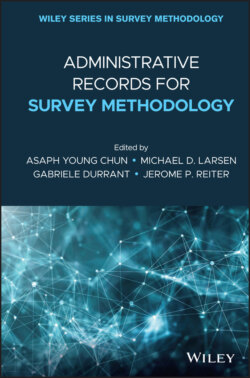Читать книгу Administrative Records for Survey Methodology - Группа авторов - Страница 41
2.3.3 LEHD: Linked Establishment and Employee Records 2.3.3.1 Data Description
ОглавлениеThe LEHD data links employee wage records extracted from Unemployment Insurance (UI) administrative files from 51 states with establishment-level records from the Quarterly Census of Employment and Wages (QCEW, also provided by the partner states), the SSA-sourced record of applications for SSNs (“Numident”), residential addresses derived from IRS-provided individual tax filings, and data from surveys and censuses conducted by the U.S. Census Bureau (2000 and 2010 decennial censuses, as well as microdata from the ACS). Additional information is linked in from the Census Bureau’s Employer Business Register and its derivative files. The merged data are subject both to United States Code (U.S.C.) Title 13 and Title 26 protections. For more details, see Abowd, Haltiwanger, and Lane (2004) and Abowd et al. (2009).
From the data, multiple output products are generated. The Quarterly Workforce Indicators (QWI) provide local estimates of a variety of employment and earnings indicators, such as job creation, job destruction, new hires, separations, worker turnover, and monthly earnings, for detailed person and establishment characteristics, such as age, gender, firm age, and firm size (Abowd et al. 2009). The first QWI were released in 2003. The data are used for a variety of analyses and research, emphasizing detailed local data on demographic labor market variables (Gittings and Schmutte 2016; Abowd and Vilhuber 2012). Based on the same input data, the LEHD Origin-Destination Employment Statistics (LODES) describe the geographic distribution of jobs according to the place of employment and the place of worker residence (Center for Economic Studies 2016). New job-to-job flow statistics measure the movement of jobs and workers across industries and regional labor markets (Hyatt et al. 2014). The microdata underlying these products is heavily used in research, since it provides nearly universal coverage of U.S. workers observed at quarterly frequencies. Snapshots of the statistical production database are made available to researchers regularly (McKinney and Vilhuber 2011a,2011b; Vilhuber and McKinney 2014).
